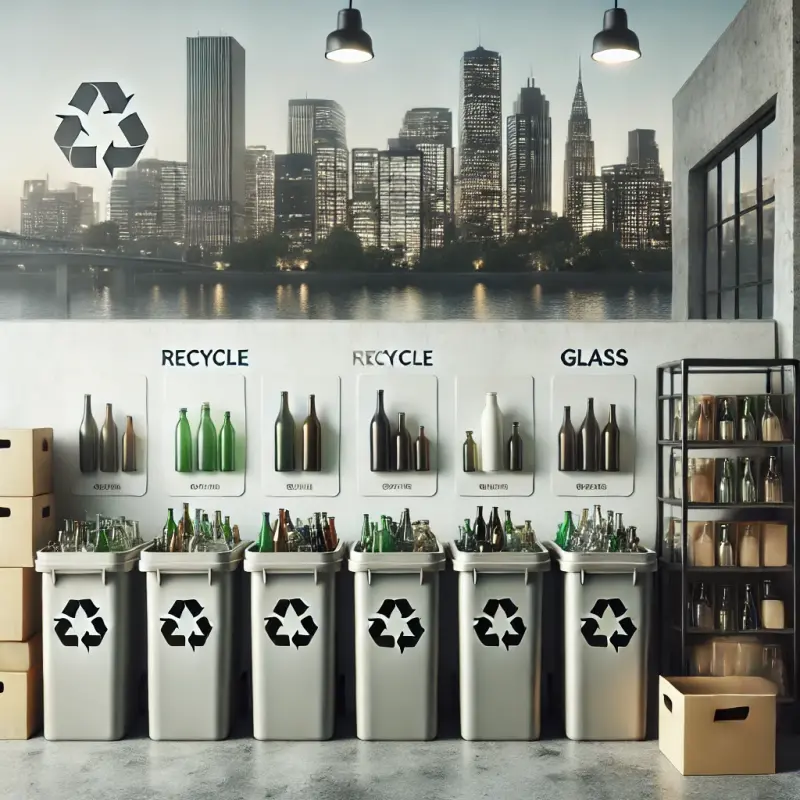Glass Recycling: A Cornerstone of Urban Sustainability
In a world increasingly conscious of environmental impact, the efficient management of waste has emerged as a critical priority. Among various waste categories, glass—one of the most durable materials—stands out as a significant challenge and opportunity. Urban centers, often producing substantial glass waste, are now turning to eco-friendly solutions to tackle this issue, enhancing sustainability and reducing environmental stress.
This article explores the transformative potential of glass recycling in cities, examining innovative methods, their ecological benefits, and the challenges faced in creating a sustainable urban ecosystem.
The Growing Issue of Glass Waste in Cities
Cities are at the heart of economic and social activity, resulting in immense consumption of goods and subsequent waste production. Glass, widely used in packaging, construction, and household items, accounts for a substantial share of urban waste. Due to its non-biodegradable nature, glass waste can persist in the environment for centuries, posing severe ecological risks.
Key statistics highlight the scale of the problem:
- Urban areas contribute to approximately 70% of the world's solid waste, with glass waste forming a significant proportion.
- Improper disposal methods, such as landfilling, not only waste valuable resources but also lead to issues like soil contamination and hazardous leachates.
Such challenges demand innovative and systematic solutions to manage glass waste effectively while minimizing its environmental footprint.
Benefits of Recycling Glass Waste
Glass is one of the most recyclable materials, with a near-infinite lifecycle if processed correctly. Recycling this resource offers numerous ecological and economic benefits, including:
-
Reduction in Raw Material Extraction
Recycling reduces the need to mine raw materials such as sand, soda ash, and limestone. This not only preserves natural resources but also decreases the environmental degradation caused by extraction processes. -
Energy Savings
Producing glass from recycled materials consumes significantly less energy compared to manufacturing new glass from raw materials. This contributes to lower greenhouse gas emissions, aiding in the fight against climate change. -
Waste Volume Reduction
Diverting glass waste from landfills alleviates pressure on these facilities, extending their operational lifespan and reducing associated environmental risks. -
Promoting Circular Economy
Glass recycling fosters a circular economy, where materials are continuously reused, minimizing waste generation and promoting sustainable consumption patterns.
Innovative Eco-Solutions for Glass Recycling
-
Color-Specific Recycling
Cities have implemented color-coded recycling systems to segregate glass by type—clear, green, and amber. This segregation enhances the efficiency of the recycling process and ensures the quality of recycled products. -
Smart Recycling Bins
Technology-driven bins equipped with sensors and real-time tracking systems optimize waste collection routes and reduce operational costs. These bins also encourage community participation by providing incentives for correct waste disposal practices. -
Automated Processing Plants
Advanced recycling facilities utilize automated systems to sort, crush, and process glass waste efficiently. Such innovations increase recycling rates and lower costs, making glass recycling more accessible and economically viable. -
Urban Bottle Banks
Strategically placed collection points, or bottle banks, encourage citizens to recycle glass waste conveniently. These banks are often integrated into public spaces, fostering a culture of environmental responsibility.
Challenges in Glass Waste Recycling
While glass recycling offers promising solutions, several challenges persist:
- Contamination of glass waste with non-recyclable materials such as ceramics or metals complicates the recycling process.
- Public awareness and participation remain critical hurdles, with many urban dwellers unaware of proper glass disposal methods.
- The high costs of establishing and maintaining recycling infrastructure can deter widespread adoption in resource-constrained cities.
Addressing these challenges requires collaborative efforts among governments, businesses, and communities to develop sustainable, scalable recycling systems.
